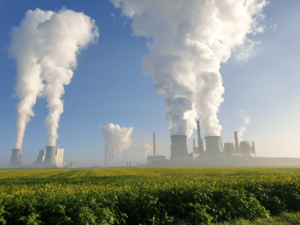A Gap in International Planning for Greening our Planet
Reducing our carbon footprint and protecting the world’s fragile environment have become important international missions, and shifting the power grid’s energy balance toward renewable resources will be essential to meet these goals. It is heartwarming to see many nations willing to work collaboratively to achieve this, as a common, planetary effort. Yet as we work toward these missions it will be critical to retain and even enhance the resilience of the fragile power grids that sustain our civilization, our economies, and our lives.
The Issue: Reducing Grid Reliance
 A more renewable grid with distributed energy resources will bring new complexities for electricity reliability, and it will mean far fewer of the large-scale generators that have been key in ensuring the grid’s resilience. And let’s be specific: “grid resilience” is not just a fine-sounding empty phrase. It refers to the capability to restart and restore quickly enough to sustain our cities, even in the most complex scenarios, like a full grid outage with widely distributed damage. In other words, something we won’t miss until it’s far too late.
A more renewable grid with distributed energy resources will bring new complexities for electricity reliability, and it will mean far fewer of the large-scale generators that have been key in ensuring the grid’s resilience. And let’s be specific: “grid resilience” is not just a fine-sounding empty phrase. It refers to the capability to restart and restore quickly enough to sustain our cities, even in the most complex scenarios, like a full grid outage with widely distributed damage. In other words, something we won’t miss until it’s far too late.
At the same time, the challenges affecting both reliability and resilience are increasing: worsening weather, supply chain issues, and a wide range of extreme threats affecting both the power grid and all the other lifeline infrastructures and resources with which the grid is interdependent. Known as “Black Sky” hazards, these include extreme solar storms, large-scale earthquakes, high morbidity pandemics, and the many risks associated with malicious actions or war, from extreme cyber or EMP strikes to direct attacks on grid-critical components.
The Solution
 As we work on reducing grid reliance, the architecture and realistic planning needed to ensure its reliability and – crucially – its resilience – must be built-in from the start, and supplemented with capabilities tied into many interdependent sectors. Finding ourselves in an unrecoverable large-scale blackout will give us great 20:20 hindsight, but that won’t keep our communities alive.
As we work on reducing grid reliance, the architecture and realistic planning needed to ensure its reliability and – crucially – its resilience – must be built-in from the start, and supplemented with capabilities tied into many interdependent sectors. Finding ourselves in an unrecoverable large-scale blackout will give us great 20:20 hindsight, but that won’t keep our communities alive.
The Challenge
Building a greener grid that is designed to be robust, to meet our changing needs, and to keep the lights on, or, in Black Sky scenarios, quickly get them back on, will require the same kind of multi-sector and international consensus now beginning to reduce our carbon footprint and protect our ecosystems.
It will require the same kind of focused attention and collaboration, especially among electric companies, regulatory agencies, and governments, but also among the world’s major corporations, research institutions, investors, and other important stakeholders. Because achieving a robust, greener grid will not be possible without the development and large-scale implementation of Black Sky-class resilience tools and capabilities.
Reducing Grid Reliance and Making It Happen
 Our future, our children’s future, depends on it, in precisely the same way they depend on protecting the unique, life-giving planet we inhabit. And it won’t happen by magic.
Our future, our children’s future, depends on it, in precisely the same way they depend on protecting the unique, life-giving planet we inhabit. And it won’t happen by magic.
“Hoping that someone else will deal with it” won’t work any better for this than it worked for climate change. This is our planet. These are our infrastructures. Let’s all find a role, and get this done together.
Please join us in a unique event designed to help kick this off on a planetary scale. The Resilient Renewable Planet Conference. Bringing together leaders from across the world to collaborate in this critical challenge.
Create Impact with us:
Join our membership and
contribution programs
Participate in our
upcoming events:
Schedule a call with
our experts:
Cyber Resilience in the Energy Sector: Safeguarding the Grid from Digital Disruptions
In today’s interconnected world, the energy sector stands as a vital backbone of national and global infrastructures, facilitating everything from lighting our homes to powering industries. However, this sector is increasingly finding itself in the crosshairs of cybercriminals, making cyber resilience not just a matter of technological integrity but of national security. The concept of […]
The Role of Local Governments in Strengthening Infrastructure Resilience
The significance of local governments in strengthening infrastructure resilience cannot be understated. Often perceived as entities primarily focused on addressing routine community concerns and improvements, their responsibilities extend far beyond these day-to-day operations. In the realm of preparing for and mitigating the effects of large-scale, catastrophic events—referred to as “black sky” disasters—local governments emerge as […]
Navigating Complex Interdependencies and Building Resilience in the E-Sector
In today’s interconnected world, the electric sector is more than just a utility provider; it’s a cornerstone of modern life. Its influence extends beyond mere power supply, touching virtually every aspect of our daily activities, from powering homes and businesses to fueling transportation and technology. This pivotal role, however, is not without its complexities. The […]
